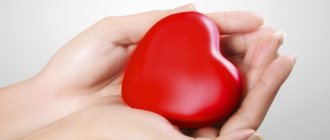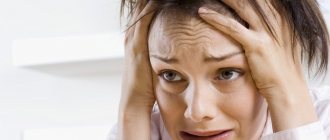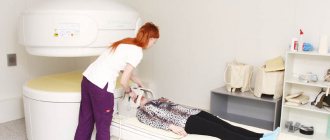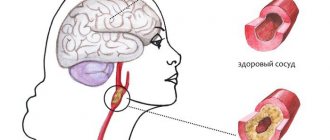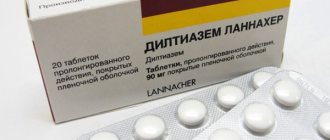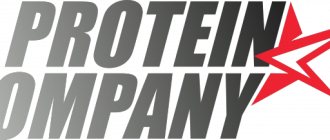01.11.2017
Interesting
Bogacheva Sharofat Bairovna
The brain is a “mystical” organ that can fill us with incredible sensations, show us our own “movie”, dreams, accumulate experience and wisdom that allows us to think. This is an organ that controls and regulates the functioning of the entire organism as a whole and each organ and system separately; providing the balance, protection, and compensatory reactions to disturbances necessary for our body. This small organ, weighing about 1400–1500 g (2% of body weight), has incredible abilities that have not yet been fully studied.
What does the brain need? Working without rest day and night, he is in dire need of oxygen (the brain consumes 20% of all oxygen entering the body) and nutrients, without which he cannot live even for a few minutes. It is a known fact that oxygen reserves are not created in the brain, and there are no substances that can nourish it under anaerobic (in the absence of oxygen) conditions. That is, the nerve cells of the brain constantly need oxygen, glucose and “cleaning” (cleansing of cell waste products).
Who may need vascular medications?
In early childhood, changes in blood flow in the brain are a consequence of perinatal encephalopathy, birth trauma, hypoxia during childbirth, and pressure drop during cesarean section. If a treatment plan is drawn up correctly, the child’s condition will normalize within 2-3 years. If the baby has cerebral palsy and other serious diseases, he will have to take vascular medications for the rest of his life.
School-age children grow quickly, and vascular medications may be needed due to the increased workload.
In adults, cerebral circulatory disorders are even more common - due to heart disease, osteochondrosis, ischemia, thrombosis, injuries, and operations.
In older people, the blood vessels of the brain suffer from atherosclerosis - blockage of the arteries with plaques. All of these categories of patients have indications for taking vascular drugs.
Calcium channel blockers
These medications are among the most popular among neurologists and therapists. Due to a decrease in the amount of calcium in cell membranes, the vascular walls relax, their lumen expands, and blood flow increases. The amount of nutrients and oxygen reaching the brain also increases. The tone of the veins does not change, which is important for maintaining normal venous outflow. There are a number of proven drugs, as well as new generation drugs.
Which ones are better to choose? The list of the most popular is given in the table.
Magnetic therapy is often prescribed for the treatment of joints and a sore spine. Its benefits for the body are undeniable, and this method of treatment is one of the safest. Read more in the article: “magnetic therapy: contraindications and side effects.”
| Generation | Name of medicine | Group |
| First | Verapamil | Phenylalkylamine derivatives |
| First | Nifedipine | Dihydropyridine derivatives |
| First | Diazem | Benzothiazepine derivatives |
| Second | Isradipin | Benzofurazanil derivatives |
| Second | Plendil | Dihydropyridine derivatives |
Currently, third-generation drugs are being developed that have even fewer side effects and contraindications. The above remedies can also treat arterial hypertension. Vasodilators are contraindicated during pregnancy and lactation.
Prevention of recurrent stroke
The reasons that led to the occurrence of a stroke most often do not disappear anywhere and continue to affect a person. The risk of recurrent stroke depends on their strength and combinations. Prevention of recurrent stroke is called secondary. List of conditions that people pay attention to first:
- Arterial hypertension is the main risk factor for stroke. It increases his risk by 5 times;
- diabetes;
- smoking;
- coronary heart disease (the risk increases by 2-4 times);
- atrial fibrillation (increases the risk by 3-5 times);
- hyperlipidemia (high levels of “bad” cholesterol);
- thrombocytosis;
- overweight.
Accordingly, it is necessary to correct these conditions and bring them back to normal to reduce the risk of recurrent stroke. Drug therapy is only part of the treatment. Diet, exercise, and giving up bad habits are important.
Antihypertensive drugs
It is recommended to reduce blood pressure, even if it is raised very slightly or within the normal range: “upper” 120-139 mmHg, “lower” 80-89 mmHg. So a decrease of 5 mmHg. helps reduce the development of stroke by 30%.
Diet, exercise, and giving up bad habits are important in preventing a recurrent stroke.
The superiority of some groups of antihypertensive drugs over others has not been proven. When prescribing, the doctor has to take into account the individual characteristics of the patient, compatibility with other drugs, and minimizing side effects. At the same time, for patients after a stroke, it is important not only to reduce blood pressure, but also to stabilize it as much as possible, even if slightly above the target values. For this use:
- Amlodipine - long-acting calcium channel blockers;
- Perindopril, Diroton, Renitek - angiotensin-converting enzyme inhibitors;
- Lozap, Cozaar, Valsartan - sartans, angiotensin receptor blockers;
- Hypothiazide, Indap are diuretics.
Drugs that prevent blood clots
With various arrhythmias, the risk of thrombosis and stroke increases up to 4 times. Anticoagulants and antiplatelet agents can be used to prevent these conditions:
- Warfarin;
- Thrombo ACC;
- Plavix;
- Chimes.
Taking this group of drugs is usually long-term, one might say lifelong.
Statins
They help not only fight atherosclerosis and high cholesterol levels, but also stabilize the surface of already formed plaques, reduce the level of inflammation in the vascular wall, which will also reduce the risk of thrombosis:
- Mertenil;
- Atoris;
- Basil.
Read more about statins in the article.
Antioxidants and antihypoxants
Such medications are always prescribed as part of complex therapy to improve cerebral vascular function. They quickly eliminate the symptoms of oxygen starvation and help strengthen vascular walls. Here is a list of the best medicines:
Advertising:
- Actovegin
(630 rubles). Activates tissue metabolism, eliminates hypoxia, optimizes trophism and recovery processes. The drug is obtained from the blood of animals, therefore, in addition to allergies, it has a small number of side effects. - Mexidol
(470 rubles). It is one of the best antihypoxants, membrane protectors, and nootropics. The medicine is administered intramuscularly or taken in tablet form. It increases the body's resistance to various damaging factors. With long-term use, the medicine somewhat thins the blood and reduces the accumulation of lipids, lowering cholesterol. - Emoxipin
(250 rubles). Antioxidant, stabilizer of cell membranes, reduces vascular permeability. Has a retinoprotective effect. Most often prescribed if cerebral disorders affect the condition of the retina. - Glycine
(40 rubles). This amino acid is a natural brain metabolite, a neurotransmitter, that helps regulate metabolism in brain tissue.
Complamin, Glutamic acid, Picamilon and other antihypoxic and antioxidant agents also improve the functioning of cerebral vessels.
Advertising:
Summarizing
Any stimulant or doping medications have an auxiliary function, but are not converters.
At any age, nootropic drugs are not able to change a person - a child will not become a genius, an adult will not be able to perform several jobs at the same time.
Nootropics practically do not help healthy people - the small positive effect is short-term.
Uncontrolled use of pharmacological agents will affect the general condition of the body, the treatment of the consequences of which will take a long time. Nootropics were created to solve blood circulation problems and partially restore the functional abilities of the brain.
Vitamins and minerals
The next group of vasodilator drugs for the brain are vitamin supplements that are urgently needed for the normal functioning of blood vessels. Most often, patients are recommended drugs based on nicotinic acid in injections.
Allergic manifestations on the face are unpleasant - the skin itches, becomes covered with spots, and becomes red. Creams and antiallergic ointments help relieve itching and irritation. Read more in the article: “allergy cream for facial skin.”
The medicine improves the metabolism of nitrogenous substances and carbohydrates, dilates blood vessels, and reduces cholesterol. Nicotinic acid also improves blood microcirculation in the brain and replenishes vitamin B3 deficiency.
The main preparations with vitamins are Nicotinamide, Niacinamide, Nicotinic acid in ampoules.
Rutin is another remedy that strengthens blood vessels. Troxerutin and Ascorutin are made on its basis; they are prescribed against the fragility of small capillaries, to reduce the permeability of vascular walls, as an antioxidant.
Also, patients with vascular diseases are recommended to regularly take tablets with retinol, tocopherol, potassium, selenium, and silicon. For osteochondrosis of the neck and other diseases of the spine, a complex of B vitamins - Neuromultivit, Compligam, Milgamma - is always introduced into the course of therapy.
Nootropics
These medications do not act directly on blood vessels, but they improve overall metabolism in tissues, stabilize neurocyte membranes, increase tissue resistance to oxygen starvation, thereby optimizing blood supply to the brain. Nootropics are prescribed even to children, they are indicated for most elderly people, and are used in the complex treatment of osteochondrosis, atherosclerosis, hypertension, the consequences of cerebral palsy, etc.
Advertising:
The cheapest and most accessible are racetams - Piracetam, Nootropil, Lucetam, Phenotropil and others.
The latest generation of drugs includes Cortexin, which is a complex of polypeptides from the animal cerebral cortex. The medicine is injected into the muscle; it is available only in injection form. Price for 10 ampoules - 1300 rubles.
Patients are also given the following injections:
- Cerebrolysin;
- Vinpocetine;
- Cavinton;
- Telektol;
- Bravinton.
Many nootropics have a positive effect on blood composition - they prevent platelets from sticking together, improving blood microcirculation by increasing its fluidity. This helps to avoid thrombosis and other serious complications of vascular pathologies.
Medicines for atherosclerosis
If a person is diagnosed with atherosclerosis, treatment with folk remedies or so-called vascular cleansing is not always enough. Atherosclerosis of cerebral vessels is a very serious disease; without treatment it leads to stroke.
The following will help improve blood circulation in this pathology:
Advertising:
- Statins
- Rosuvastatin, Atorvastatin, Lovastatin. Many people have to take these medications for several years; they normalize cholesterol levels and prevent it from depositing in the blood vessels. Unfortunately, statins have a bad effect on the liver and other internal organs and can cause a number of side effects. - Fibrates
- Fenofibrate, Clofibrate. They increase “good” cholesterol while reducing “bad” cholesterol. The course usually lasts up to 2 months, then take a break. - Other means - bile acid sequestrants
. These medications are Cholestyramine and Cholestipol. They bind the cholesterol present in the intestines and remove it, preventing it from being absorbed.
In mild cases of atherosclerosis, it is enough to take Omega-3 acids, which strengthen the walls of blood vessels and prevent the disease from progressing.
Microcirculation correctors
The drug Betahistine ( Betaserc ), which belongs to this group, not only corrects blood flow in the capillaries, but also allows you to overcome attacks of dizziness, unsteadiness of gait in chronic disorders of blood flow to the brain. Tablets of 8 or 16 mg are used in courses. The dose per day is 24-48 mg, divided into three doses.
Not prescribed for pregnant and lactating women. Use cautiously for bronchial asthma , ulcers.
As side effects, disturbances in the gastrointestinal tract and urticaria .
Analogues of Betaserc are Betagistin , Vestibo , Betaver , Tagista . Cost – from 100 rubles.
Other drugs
Often a person experiences vascular spasms (when taking vasoconstrictor medications, hypertension, smoking, etc.). In this case, antispasmodics will help improve blood flow - No-shpa, Revalgin, Drotaverine, Papaverine. Doctors also prescribe as vascular agents:
Advertising:
- antiplatelet agents (thin the blood) - Warfarin, Heparin, Aspirin;
- medicines with ginkgo biloba (increase blood supply to the brain) - Tanakan, Gingikum, Bilobil.
You cannot select treatment regimens on your own - it is important to make prescriptions taking into account the exact indications and type of disease, to know the contraindications, side effects and effectiveness of the active substances.
Symptoms of cerebrovascular accident
When a lesion forms in the brain with impaired blood supply, the patient may experience numbness in half of the body (on the side opposite to the lesion) and part of the face around the lips; short-term paresis of the limbs or other parts of the body and face is possible. Speech is impaired and an epileptic seizure may occur.
If there is a circulatory disorder, depending on the location of the lesion, the legs and arms may become weak, the head may become dizzy, the patient may have difficulty swallowing and pronouncing sounds, photopsia (appearance of luminous spots, sparks, etc. in the eyes) or diplopia (doubling of visible objects) may occur. . The person loses orientation and has memory lapses.
Signs of impaired cerebral circulation due to hypertension are manifested in the following: the head and eyeballs begin to hurt very much, the person experiences drowsiness, he experiences stuffiness in the ears (like on an airplane during takeoff or landing) and attacks of nausea. The face turns red and sweating increases.
Unlike strokes, all these symptoms, which are called “transient attacks,” disappear within 24 hours.
Chronic cerebrovascular accident (CVA), unlike acute forms, develops gradually. There are three stages of the disease:
- At the first stage, the symptoms are vague. They are more like chronic fatigue syndrome. A person quickly gets tired, becomes hot-tempered and absent-minded, and forgets some minor points. His sleep is disturbed, his mood often changes, his head hurts and he feels dizzy.
- At the second stage, chronic cerebrovascular accident is accompanied by significant memory deterioration, and minor motor dysfunctions develop, causing unsteadiness in gait. There is a constant noise in my head. A person perceives information poorly, having difficulty concentrating his attention on it. Becomes irritable and unconfident, loses intelligence, reacts inadequately to criticism, and often becomes depressed. He gradually degrades as a person and adapts poorly socially. He constantly feels dizzy and has a headache. He always wants to sleep. Performance is significantly reduced.
- In the third stage, all symptoms intensify. Personality degradation turns into dementia, memory suffers. Having left home alone, such a person will never find his way back. Motor functions are impaired, which manifests itself in hand tremors and stiffness of movements. Speech impairment and uncoordinated movements are noticeable.
The best drugs for the blood vessels of the head
It is possible to resume the stable operation of the processes occurring in the organs of the central nervous system if you follow the exact instructions for natural medicinal products and modern vasodilating drugs.
- Actovegin
. Promotes oxygen saturation of tissues and organs, has an antioxidant effect, restores blood flow, and prevents the onset of ischemic stroke. Daily dosage: 1-3 capsules before meals 3 times. Intravenous administration involves 10-15 ml of the drug in combination with a 0.9% NaCl solution or 5% dextrose. - Vasobral
. Vasodilating drug. Reduces the permeability of the vascular wall, restores cerebral circulation, increases mental activity, reflex excitability of the spinal cord and increases the activity and stability of the brain. Eliminates attention, memory and vestibular complications. Prescribed 0.5 - 1 tablet in the morning and evening. In the form of a solution, it is recommended to take 2-4 ml twice a day. - Ceraxon
. The nootropic active ingredient promotes the restoration of cells and damaged tissues. Reduces the effects of memory loss, improves attention and thinking. For traumatic brain injuries and heart failure, it reduces the duration of associated symptoms. In the acute ischemic period, intravenous administration of 1000 ml is recommended.
CLASSIFICATION OF TOPICAL NASAL DECONGESTANTS
(after Malm L., Änggard A., 1993, with modifications)
| Mechanism of action | INN | Trade names |
| α1-adrenergic agonist | Phenylephrine hydrochloride | Vibracil, Adrianol, Nazol Baby, Nazol Kids |
| α2-adrenergic agonists | Xylometazoline | Afrin, Brizolin, Galazolin, Dlynos, Ximelin, Xylen, Olint, Otrivin, Rhinonorm, Rinostop, Tizin Xylo, Farmazolin |
| Oxymetazoline | Leconil, Nazivin, Nazol, Fazin | |
| Naphazoline | Nafazol-Hemofarm, Naphthyzin, Privin, Sanorin | |
| Indanazoline | Farial | |
| Tetrizoline | Tizin |
Injections for cerebral vessels
The following vascular drugs are often used for injection:
- Vinpocetine, Cavinton and Bravinton are alkaloid derivatives
. They help normalize the nutrition of nerve cells and also significantly improve blood flow. These are new generation drugs to improve cerebral circulation. - Nicotinic acid, Nikoshpan are derivatives of nicotinic acid
. This type of product can be purchased at a pharmacy only with a prescription written by a doctor. - Drotaverine (No-shpa)
. As a rule, this drug is prescribed in the form of tablets. However, it is sometimes also used in injectable form. This drug is considered harmless, inexpensive, and has the fewest contraindications. - Nootropic drug, Piracetam
. Such drugs can improve brain nutrition and relieve spasms. They are often taken by older people as a preventative against dementia. - Eufillin
. This medicine has a vasodilating effect and also has a beneficial effect on oxygen supply to the brain. It is contraindicated for diseases of the gastrointestinal tract, glaucoma, and for problems related to blood pressure.
Diagnostics
A routine examination does not reveal an aneurysm. It makes it possible to suspect pathology and determine the path of examination. Basic diagnostic measures:
- Palpation, examination of the skin.
- Blood pressure measurement.
- Neurological examination, which includes: assessment of muscle tone, reflexes, test movements to assess the functioning of the nervous system.
- CT and MRI are the main methods for making an accurate diagnosis. They allow you to determine the location and size of the formation, the presence of blood clots, and assess the condition of the surrounding tissues.
Drugs for cervical osteochondrosis
Osteochondrosis is a disease accompanied by pain in the spine that interferes with everyday activities. The use of non-steroidal anti-inflammatory drugs for osteochondrosis helps alleviate the health condition: they eliminate the inflammatory process in the tissues of the spine, thereby relieving pain. But not all anti-inflammatory drugs are equally effective and safe for the body.
- Diclofenac
. Included in the anti-inflammatory drugs Voltaren, Ortofen, Diclak, Flotak, Diclobene. The analgesic and anti-inflammatory effects are equally well expressed. It inhibits both forms of the COX enzyme, but to a greater extent COX-2, so drugs with Diclofenac are less likely to cause gastrointestinal lesions than other first-generation NSAIDs. - Ibuprofen
. Preparations with ibuprofen (Dolgit, Nurofen, Ibalgin, Solpaflex) have a pronounced analgesic effect, the anti-inflammatory effect is somewhat weaker. Clinical studies have shown that the incidence of adverse reactions after taking therapeutic doses is the lowest among all non-selective NSAIDs. - Indomethacin
. One of the oldest representatives of the group of non-steroidal drugs. It has proven itself as a powerful analgesic and anti-inflammatory agent for osteochondrosis and other rheumatic diseases. But taking this drug is unsafe in terms of the development of serious complications of the gastrointestinal tract, central nervous system, heart failure and has many contraindications. It is used only occasionally for unbearable pain.
Indications
Vasoconstrictors effectively improve nasal breathing in all categories of patients, regardless of the cause of the disease. They work equally well for allergic, infectious and vasomotor rhinitis. It has been proven that the administration of decongestants reduces the duration of an acute runny nose by a third - from 6 to 4 days. For allergic rhinitis, the administration of decongestants in a short course (no more than 10 days) may also be justified. By reducing swelling of the nasal mucosa, they allow antiallergic drugs (topical intranasal corticosteroids and antihistamines) to penetrate more deeply. Decongestants are often prescribed situationally, for example, during air travel in persons with rhinitis or sinusitis to prevent otitis media. Or in acute otitis media to restore the function of the auditory tube. However, this practice has not yet received scientific confirmation. Apart from restoring nasal breathing, these drugs have no effect on other symptoms of rhinitis: they do not reduce the number of sneezes, and experimental studies in animals show that when treated with vasoconstrictors, the amount of nasal discharge even increases.
Traditional methods of treatment
Today, home medical treatment methods are not inferior to modern methods of treatment, so many people prefer to be treated and prevent dystonia on their own, using the gifts of nature. Herbalists suggest treating narrowed blood vessels in the brain with effective herbal infusions.
- You need to take a couple of particles, divided equally: burdock root, eleutherococcus fruits, mint and birch leaves, marsh cudweed, kidney tea. Pour half a liter of hot water over the entire mixture and leave for 30 minutes. For the best effect, you need to drink one hundred ml of liquid three times per 24 hours.
- Mix St. John's wort, chamomile, immortelle, birch buds and add a few glasses of hot water. We divide the collection in half and drink it twice every day with a small spoon of honey and bay leaf oil.
- We take clover, 5 parts of wormwood, a couple of pieces of myrtle, one piece of marjoram and half a share of parsley seeds. A liter of hot water is added to three large spoons of the product. Let the broth sit for a couple of hours, drink 1 fourth cup every few hours.
- Boil the mixture with pine needles, onion peels and rose hips, and let it sit. We drink half a liter a day for 3 months, dividing the portion into morning, lunch and evening.
- Take one large spoon with chopped burdock rhizome, fill it with half a liter of water and leave it in a thermos for infusion. We drink 100 ml in the morning for 3 months.
Before using traditional recipes, you should consult your doctor.

